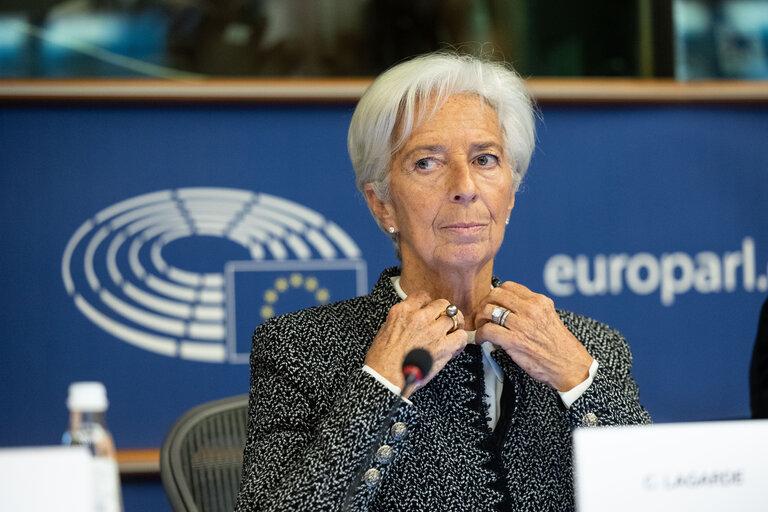The news in November of the Federal Reserve Bank of New York’s participation in a 12-week digital dollar pilot project with Citigroup, HSBC, Mastercard, and others was overshadowed by the collapse of crypto exchange FTX earlier that month. The latter grabbed all the headlines, triggering a deepening of the bear market, also referred to as a “crypto winter”.
But the New York Fed is just the latest entity to explore central bank digital currencies (CBDCs), despite the bad press around stablecoins, Bitcoin, and the underlying blockchain technology. Eleven countries have so far launched digital currencies, according to the Atlantic Council. These include Nigeria, The Bahamas, Jamaica, and several Caribbean Islands, while China, Russia, Saudi Arabia, and a number of others are in the development or pilot stage. A total of 19 of the G20 countries are currently exploring a CBDC.
According to the Digital Euro Association (DEA), around €1trn ($1.06trn) of funds has shifted towards cryptocurrencies and stablecoins, causing parallel circulations of money to emerge next to the ones monitored by countries’ monetary authorities. The market cap of stablecoins in early 2022 was $190bn.

The European Central Bank (ECB) is among those seriously focused on the endeavor. “We recognize the benefits of discussing […] cross-currency payments made in retail CBDCs and the potential effects of giving foreign users access to domestic retail CBDCs under specific conditions,” said ECB President Christine Lagarde in October.
Not so stable
Currently the closest thing to a CBDC is a stablecoin. Collectively, nearly $3trn in stablecoins such as tether and USDC were transacted in the first half of 2021, according to McKinsey. But they have also faced turmoil and scandal, not least the collapse of Luna and its associated stablecoin terraUSD in May, while Tether Limited Inc was fined $41m in October 2021 for violating the Commodity Futures Trading Commission (CFTC) regulations and the Commodities Exchange Act (CEA).
In contrast, a CBDC would in theory be risk-free, since central banks are authorized to print money and, in times of recession and economic downturn, act as the lender of last resort. Stablecoins simply rely on the entity that issues them, and on the credibility and enforceability of their pledge to maintain value over time.
“I don’t see a risk related to a potential collapse such as that of a stablecoin, because the price of the CBDC is always the price of the euro,” says Dr Jonas Gross, Chair, DEA. “There is no exchange rate to the euro. However, as it is a digital form of money, we need to be sure that the likelihood of exploits and hacks is limited. Another risk is a destabilizing of the financial sector via disintermediation or via accelerating bank runs. This is why the ECB thinks about limits on CBDC holdings.”
But there are some who think the bad press stablecoins has received has spurred governments into regulating an industry that its founders had hoped would remain decentralized and therefore unregulated. SEC Chair Gary Gensler even said in October that despite their beginnings, digital currencies have become highly centralized.
“Central banks and regulators will use the collapse of FTX as a way to promote CBDCs as a “safer crypto environment for users,” says Stefan Rust, CEO, Laguna Labs and former CEO of Bitcoin.com. “This may precipitate a cold war between decentralized stablecoins and CBDCs, as users concerned about their liberty move more towards the former as governments push the latter harder to give them full control over their citizens’ spending.”
Inclusivity and useability
When Rishi Sunak took over as UK Prime Minister, the British government was quick to recognize crypto as a regulated financial instrument, in a bold move to make the UK a “cryptoasset technology hub”. This means developing CBDCs on both the wholesale and retail side.

“Financial inclusion remains a key priority area for the Bank of England, and maintaining access to public money is a means of ensuring that such policy objectives can be delivered,” says Jannah Patchay, Policy Lead, Digital Pound Foundation. “Public money also represents a fundamental policy implementation and delivery mechanism for the UK government, which could be strengthened in the future through the introduction of a functionally-rich CBDC.”
The Bank of England has been clear that any UK CBDC would work alongside – not replace – cash and bank deposits, and that it would continue to provide cash for as long as the public still wants it. What is key is that there should be cross-border collaboration. The ECB’s Lagarde has said that international cooperation on digital currencies would “remain essential”.
“On a cross-border basis, there is a need for central banks to collaborate on implementing mechanisms for interoperability between different CBDCs. There is potential for the private sector to assist with this, for example SWIFT’s recent work in this area,” says Patchay.
“If a digital euro is launched, which will be decided in October 2023, it will be interoperable with currently existing forms of money,” says Gross. “It is important for a CBDC to have tangible benefits for users. We currently have very efficient and diverse payment methods available in the euro zone. A CBDC needs strong benefits to get a substantial market share. These benefits could, for example, relate to providing strong guarantees in the digital world, providing a means of payment that has both online or offline capabilities, or allow for integration with programmable payment use cases.”
“Central banks and regulators will use the collapse of FTX as a way to promote CBDCs as a safer environment for users.”
Stefan Rust, CEO, Laguna Labs and former CEO of Bitcoin.com
The FTX collapse has shed light on the need for regulation of the crypto industry. This could lead to advocates of digital currencies splitting into various camps.
“I feel that governments are beginning to realize that they can track this open, transparent technology and use it to follow funds and wallets around the world,” says Rust. “It’s been a long hard fight to get recognition for a new monetary system since the 2008 financial crisis that brought the need for one about in the first place. It is likely we will see a split among blockchain users between those that will love working with CBDCs and others that will prefer blockchain-enabled, centralized currencies, and there will be another portion that will prefer censorship-resistant, decentralized options.”
Industry experts have described the past few years as a digital currency race. By early 2022, over 80% of central banks were considering a CBDC, but Europe and North America lag behind most other regions. Nigeria is currently the most advanced country in the retail space with its eNaira, while Hong Kong, Thailand and Singapore lead in terms of wholesale. We’ll have to wait to see who wins this race, but also what it means for consumers.

















